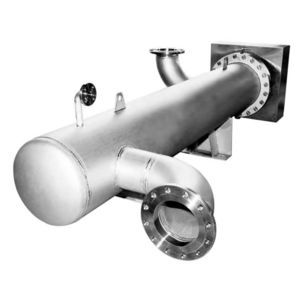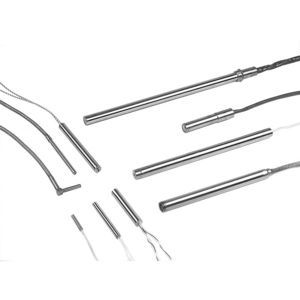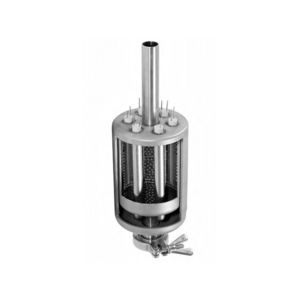
- Industrial machines and equipment
- Heat Exchanger and Refrigeration
- Air heater
- heatsystems GmbH & Co. KG
Air heater convection



Add to favorites
Compare this product
Characteristics
- Treated product
- air
- Type..
- convection
Description
Channel-type air heaters are designed for efficiently heating of flowing gaseous fluids, air in most cases. The design is based on the general conditions such as the type and properties of the respective fluid, pressure and temperature as well as the desired operating points in the process.
Channel-type air heaters directly heat fluids. To this effect, electrical energy in the heating elements is converted to thermal energy. The thermal energy is then transferred from the heating rods to the fluid. Here, it is important that the design be matched to the general conditions, for each fluid has its specific properties.
Normally, only air is heated in electrical channel-type air heaters. This heated air is used for different purposes:
Heating of air
Sealing air
Process air
Hot air
The fluid to be heated and the application temperature mainly define the materials which can be used for the unheated and/or heated surfaces.
Materials of the wetted and unheated components
Carbon steel
Corrosion-resistant stainless steel
Heat-resistant stainless steel
Titanium, Hastelloy, special materials
Brass
Materials of the heating surface:
Carbon steel
Corrosion-resistant stainless steel
Heat-resistant stainless steel
Titanium, Hastelloy, special materials
The design of the individual heating elements is a function of the application. There are faster or slower heating elements, mechanically robust or more filigree designs. Also, a distinction is made between compacted heating elements and heating elements where the internal heating insert can be replaced without the necessity of draining the fluid.
Catalogs
No catalogs are available for this product.
See all of heatsystems GmbH & Co. KG‘s catalogsRelated Searches
- Vessel
- Heat exchanger unit
- Liquid/liquid heat exchanger
- Resistance heater
- Water vessel
- Heater
- Tubular heat exchanger
- Stainless steel heat exchanger
- Gas heater
- Water tank
- Air heater
- Electric heater
- Liquid heater
- Immersion heater
- Tubular resistance heater
- Cartridge heater
- Circulation heater
- Convection heater
- Flat resistance heater
- Ceramic resistance heater
*Prices are pre-tax. They exclude delivery charges and customs duties and do not include additional charges for installation or activation options. Prices are indicative only and may vary by country, with changes to the cost of raw materials and exchange rates.



















